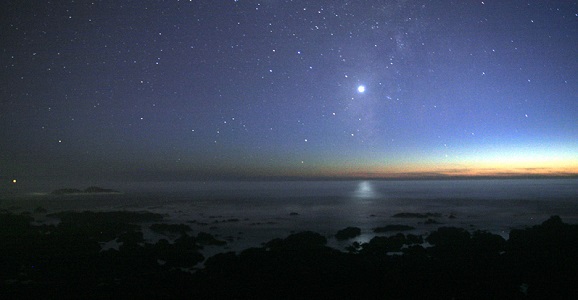NASA VeSpR Rocket Telescope Scours Venus’ Atmosphere For Signs Of Water
This article is more than 2 years old
 While the Cassini, Curiosity, and MESSENGER craft have been giving us extensive information about Saturn, Mars, and Mercury, respectively, it’s been a few years since our space program has been able to study Venus with much complexity. But earlier this week, NASA launched the Venus Spectral Rocket Experiment, or VeSpR, the data from which will be used to determine whether or not the planet was ever covered in water. Whatever happened to just politely asking a planet if it had any water?
While the Cassini, Curiosity, and MESSENGER craft have been giving us extensive information about Saturn, Mars, and Mercury, respectively, it’s been a few years since our space program has been able to study Venus with much complexity. But earlier this week, NASA launched the Venus Spectral Rocket Experiment, or VeSpR, the data from which will be used to determine whether or not the planet was ever covered in water. Whatever happened to just politely asking a planet if it had any water?
The VeSpR combines a Terrier missile and a Black Brant Mk1 sounding rocket equipped with a telescope. The rocket was sent up to more than 65 miles above the Earth’ surface, where the atmosphere is thin enough that ultraviolet rays coming off of the upper parts of Venus’s atmosphere can be measured without our planet’s atmosphere getting in the way.
In order to solve the mystery of if Venus ever had water, researchers will compare measurements of how much hydrogen and deuterium — a heavier form of hydrogen — are still in the atmosphere. The sun’s UV rays would have made most or all of the water molecules in and around Venus break down, and the lighter hydrogen atoms would have floated off into space faster than their heavier forms. The comparison between the two will tell scientists the amount of water that escaped Venus, along with a general time frame of how long it took.
The rocket only took measurements for around eight minutes, after which it parachuted back to Earth, where it was retrieved to be used in potential future assignments. The data was transferred real-time back to NASA, and as of now, there are no reported mistakes during the mini-mission. I suppose we’ll be hearing about some results in the next few days/weeks/months, as the results will be studied and compared to data collected by the Hubble telescope.
“Venus today has a thick atmosphere that contains very little water,” said Boston University’s John T. Clarke, the mission’s principal investigator, “but we think the planet started out with an ocean’s worth of water.” It was previously estimated that the entirety of Venus could have been engulfed beneath over 20 feet of water, but it’s now assumed the differences in hydrogen and deuterium at different heights would change those conjectures.
This comes a week after the MAVEN probe was launched to study the atmosphere above Mars, where the existence of water has been confirmed by Curiosity. Should the VeSpR data come back with absolute confirmation that Venus once held water, then you know NASA will ramp up their efforts to get a mission to Europa, Jupiter’s most promising moon.
While the following video of the Venus transit last year is free from waterfalls and rain, it’s still beautiful. And isn’t that what life is really all about? Oh, no, water probably is more important.











